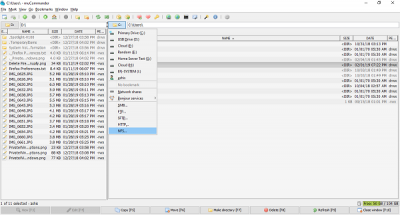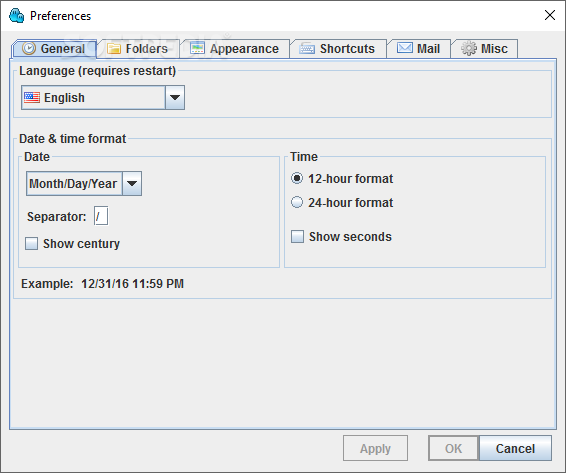

- #Mucommander source code install#
- #Mucommander source code drivers#
- #Mucommander source code plus#
- #Mucommander source code mac#
- #Mucommander source code windows#
** (gedit:15054): WARNING **: Set document metadata failed: Setting attribute metadata::gedit-position not sudo gedit /etc/apt/sources.list ** (gedit:15054): WARNING **: Set document metadata failed: Setting attribute metadata::gedit-encoding not supported ** (gedit:15054): WARNING **: Set document metadata failed: Setting attribute metadata::gedit-spell-language not supported (gedit:15054): Gtk-WARNING **: Calling Inhibit failed: GDBus.Error.ServiceUnknown: The name was not provided by any. holding back on the last couple of machines until I see these bugs have gone away.Ĭode: (gedit:15054): Gtk-WARNING **: Calling Inhibit failed: GDBus.Error.ServiceUnknown: The name was not provided by any. I do appreciated the fantastic support from everyone, just disappointed I was not able to resolve the thread and more serious problems then manifested themselves as part of the latest upgrade. I have fixed the problem, but not by cleaning out the sources effectively, but starting from scratch, so the thread is NOT Solved, just closed.
#Mucommander source code drivers#
All to do with the nvidia drivers and the new kernel. And the problem that caused both machines to crash after rebuild seems to be a known bug with more incidents being added daily, c3,000 currently. after the rebuild, from the start there were broken sources and problems, without anything being changed.

There are real problems with this latest "upgrade". It could quite easily offer to use it and just upgrade/reinstall any requirements.
#Mucommander source code install#
There must be a way of saving all the installed apps and their configs (including fstab, smb, soduers, gnome, panels, desktop), including the desktop, and any scripts (Virtual Machine auto start, VM auto shutdown, no-ip start, Stunnel, DNLA) without having to go back to scratch and try and recover from memory.Īnd why does a new install also not recognise that an existing Home Directory is available. Neither is as it was and struggling to get them there again - not happy about that. Have both machines running now after fresh installs. Verdict:ĭespite a few annoying niggles, muCommander is well worth checking out, particularly if you’re looking for a cross-platform solution to your file management woes.Well, not really sure what to write here. File ordering is now “natural”, meaning symbols come before digits, and filenames are displayed so the beginning and end is always visible, however small the window. There’s also a quick list for root folders – press + to reveal the pop-up menu. Later versions added tabbed browsing support, while the text viewer and editor can now display line numbers if required as well as wrap long lines of text. It’s here you discover that muCommander goes beyond simple file management, offering links to network shares, Bonjour services and a range of internet protocols, including FTP, HTTP and NFS, giving you access to remote directories too. There are a few niggles, largely down to the limitations of the Java platform – OS X apps or certain file types (we’re looking at you, OpenOffice) need to be opened with the Open Natively command, while the Open With option doesn’t dovetail in with the OS’s own – instead you need to grapple XML to build your own customised lists.īrowsing your drives is simple and quick: you can enter paths manually, create bookmarks for easy access to favourite folders or click the folder button to browse for a location.
#Mucommander source code plus#
You can also open files directly from here, plus access some useful built-in tools, such as a text editor and file unpacker/packer. You’re then left with two panes, which work as you’d expect – drag and drop files between them to copy from one to the other, or hold as you drag to move instead of copy. Once installed, launch muCommander and choose your theme and look and feel – select one of each and the window updates to give you a preview before click OK.
#Mucommander source code mac#
It’s not been built natively for Windows, Mac and Linux – instead, it utilises Java so development is concentrated on a single build, but applies equally to all versions.

These file manager replacement tools aren’t new or rare, but what sets muCommander apart is the fact it’s cross-platform. If you’re frequently shunting files between two locations on your hard drive, one of the best things you can do is reach for a third-party file manager that lets you open a single window with two (or more) panes allowing you to set up source and destination locations quickly and easily.
#Mucommander source code windows#
One of the weaknesses in Windows Explorer, OS X Finder and a myriad of Linux file managers is the fact they insist on opening two separate windows to view two different folders or drives.


 0 kommentar(er)
0 kommentar(er)
